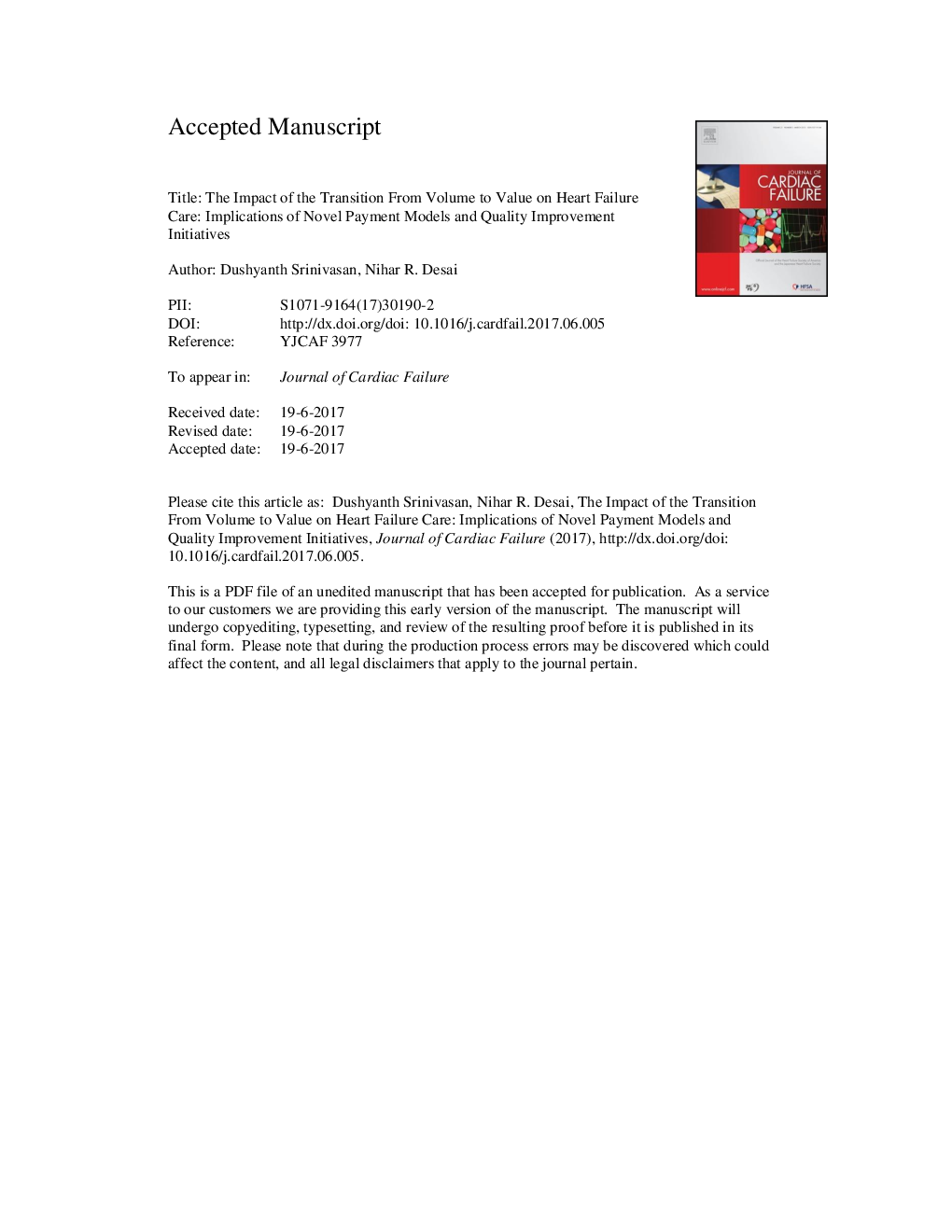| Article ID | Journal | Published Year | Pages | File Type |
|---|---|---|---|---|
| 5614475 | Journal of Cardiac Failure | 2017 | 22 Pages |
Abstract
In response to wide variation in quality and outcomes as well as escalating health care costs, the U.S. health care system is moving away from a volume-based payment system to a quality- and value-based system. Medicare, the largest insurer and payer of health care, has accelerated the movement toward value-based care with the development and implementation of myriad alternate payment models and pay-for-performance programs as part of the Affordable Care Act. Given that heart failure affects a significant number of Medicare patients and that these patients account for a disproportionate amount of health care utilization and spending, heart failure has become a focal point for these initiatives. In this article, we highlight 4 such programs beyond the Hospital Readmission Reduction Program (HRRP) which financially penalizes hospitals for excess readmissions. Specifically, we focus on Hospital Value-Based Purchasing (HVBP), Bundled Payments for Care Improvement (BPCI), the Merit-Based Incentive Payment System (MIPS), and Accountable Care Organizations (ACOs). The HVBP and BPCI programs aim to improve quality and cost efficiency primarily among patients who are hospitalized, and the MIPS program has taken similar aim in the ambulatory setting. Finally, ACOs encourage active population health management across the continuum of care as providers bear financial risk for enrolled patients. Given broader discussions about health care reform, the specific policies and programs meant to accelerate the transition from volume to value may be altered. However, the underlying drivers for reform will persist, and heart failure is a clinical condition that by comparison will be subject to greater scrutiny.
Keywords
Related Topics
Health Sciences
Medicine and Dentistry
Cardiology and Cardiovascular Medicine
Authors
Dushyanth MD, Nihar R. MD, MPH,
